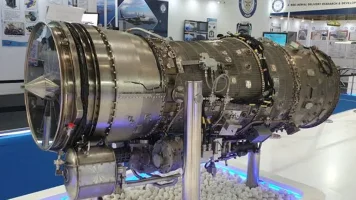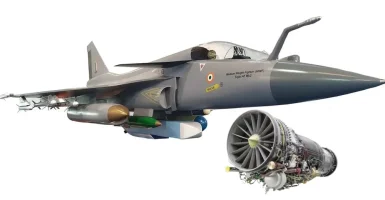- Views: 5K
- Replies: 12
In a major leap forward for India's indigenous aerospace capabilities, the Gas Turbine Research Establishment (GTRE), a lab under the Defence Research and Development Organisation (DRDO), has announced that the Kaveri engine has been cleared for inflight testing. This marks a pivotal moment in the Kaveri engine project, which has navigated a challenging path since its inception in the late 1980s.
Initially intended to power the Light Combat Aircraft (LCA) Tejas, the Kaveri engine encountered technical hurdles that led to its decertification for that project. Undeterred, the DRDO shifted its focus to developing a dry variant of the Kaveri engine, now destined for unmanned aerial vehicles (UAVs) like the Ghatak, India's stealth UCAV program.
After years of rigorous ground testing, modifications, and enhancements, the latest iteration of the Kaveri engine has shown promising results in reliability, thrust output, and operational stability. The engine has successfully completed demanding tests, including high-altitude simulations in Russia and extensive ground trials in India, meeting the performance benchmarks required for inflight testing.
The Kaveri engine currently achieves a dry thrust of approximately 49-51 kN, suitable for UAV applications. There are plans to integrate an afterburner to boost thrust to 73-75 kN for more demanding scenarios. The clearance for inflight testing follows a successful Safran audit in 2018, which indicated the engine had reached a maturity level suitable for aircraft integration, albeit on a limited scale.
The next crucial phase involves mounting the Kaveri engine on a flying test bed (FTB) for real-world performance evaluation. This will involve testing the engine's response to various flight conditions, its integration with aircraft systems, and its overall reliability in dynamic environments.
This clearance represents not only a technological achievement but also a strategic victory, propelling India towards self-reliance in aero-engine technology. It signifies a reduction in dependence on foreign engine suppliers, a critical objective for India's defence strategy and its broader aerospace ambitions.
While this is a significant milestone, challenges remain. The engine must prove its endurance, efficiency, and adaptability throughout extended inflight tests. The DRDO and GTRE are committed to refining the Kaveri, with plans for a Kaveri 2.0 that could potentially match or exceed the thrust of engines currently used by the Indian Air Force.




